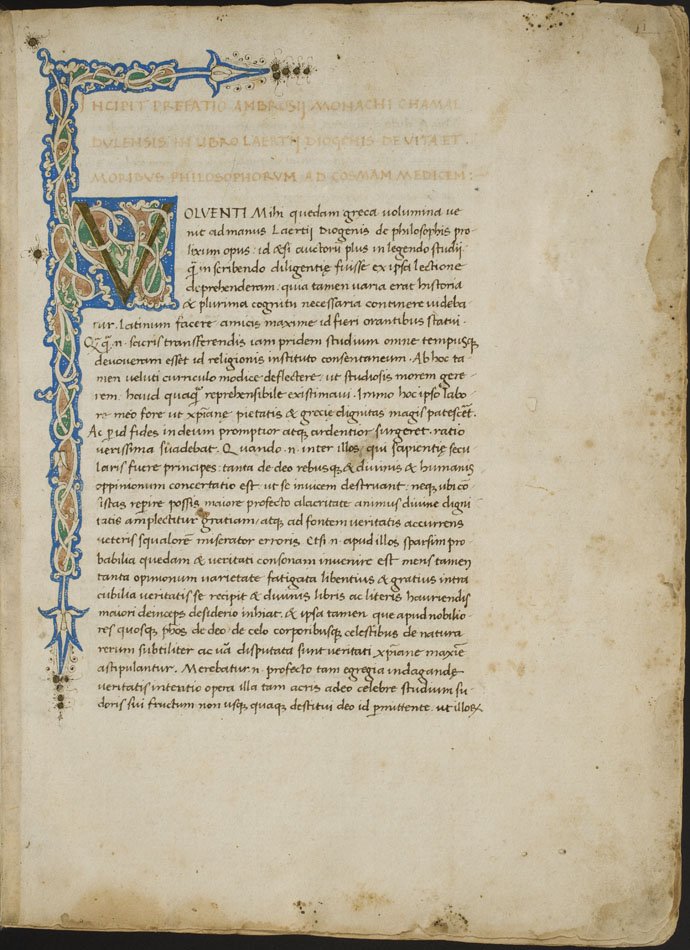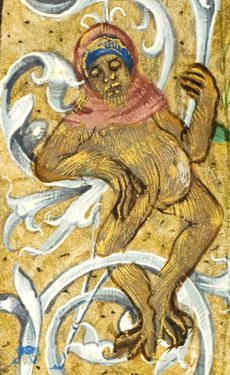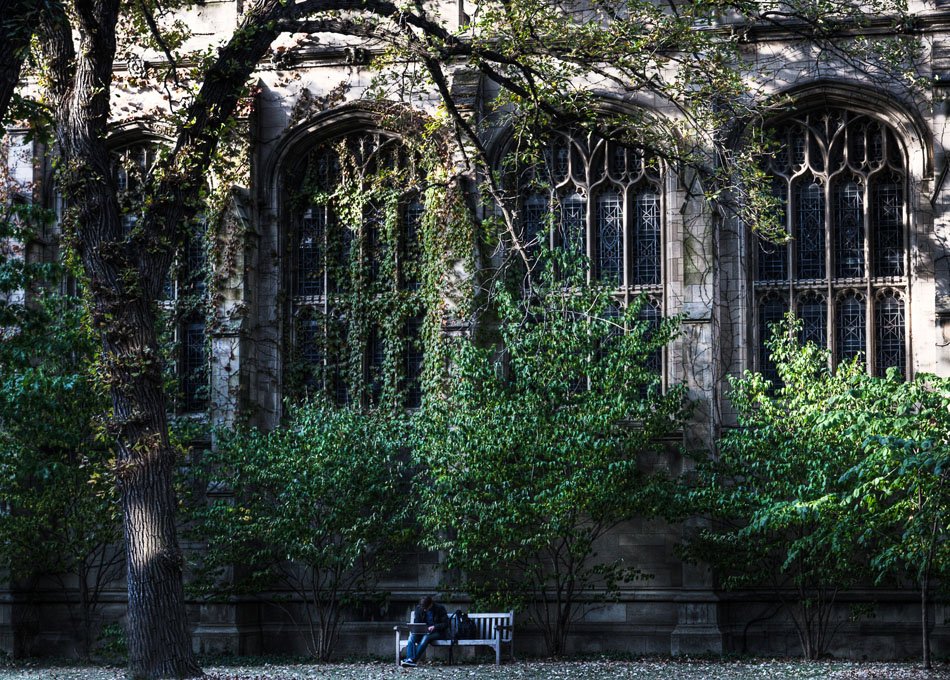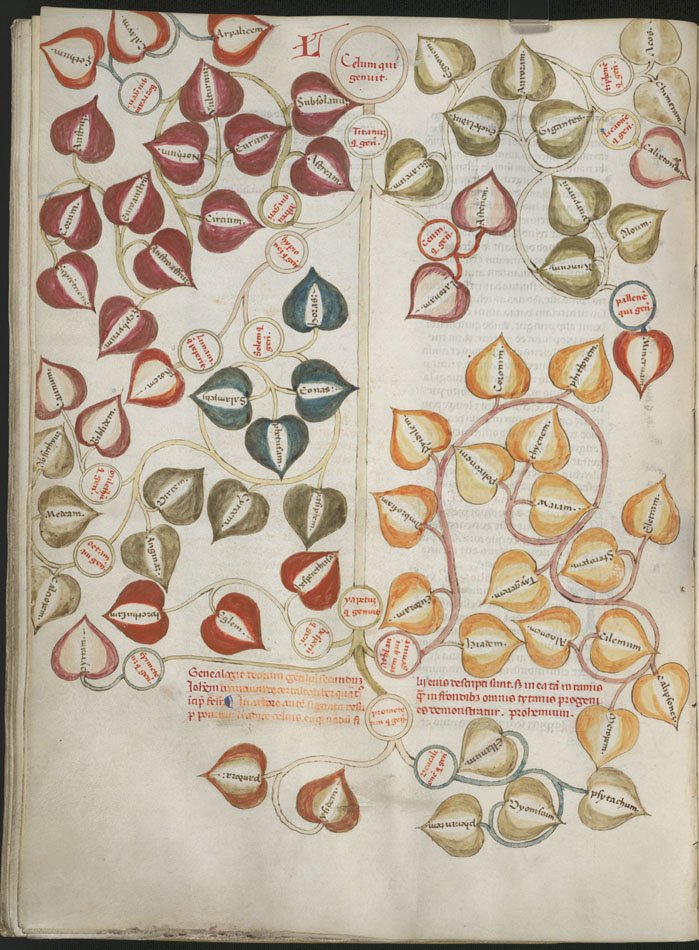Vines and Architecture

Diogenes Laertius, translated into Latin by Ambrogio Traversari
Italy, ca. 1450-70
Paper and parchment
MS 15, f. 1r (and facing flyleaf)
Lives and Opinions of Philosphers contains a biographical history of philosophy through the third century. The flyleaf on the left presents a table of contents. On the right, red-brown, humanistic cursive script announces the beginning of the book. A large illuminated initial V, decorated with gold leaf and blue, green, and brownish inks, begins a phrase identifying Diogenes Laertius as the author. The decorated initial with its brilliant blue background and interlacing, fleshy, white vines frames the left and top sides of the page. The vivid colors and complex design command attention and indicate the importance of the page.

Northeastern France, ca. 1400-1410
Parchment
MS 26, ff. 12v-13r
This page marks the beginning of the Hours of the Virgin, a series of eight prayers recited at specific times, or “hours,” throughout the day. The Annunciation, the moment when the archangel Gabriel tells the Virgin Mary that she will bear God’s son, is the featured image. As is typical in Books of Hours, the Annunciation accompanies the pre-dawn prayers for Matins. Four thick red and blue bars construct a frame around the painted miniature and words of text. The bars organize the page into interior and exterior spaces, separating the sacred image from the secular reader. Yet the sinuous, blossoming vines originate from the golden tips of those bars. The leafy growth overcomes solid boundaries, suggesting physical and spiritual fluidity between spaces, inviting the lay viewer into the sacred space of the Annunciation and vice-versa.Giovanni Boccaccio (1313-1375)
Illustrations attributed to Don Simone da Siena
Florence, Italy, ca. 1385-1387
Paper
MS 100, ff. 48v-49r
Giovanni Boccaccio, the Renaissance author and poet, began his
in 1360. The text is a mythography, or a mythological encyclopedia, in which the author assembles, arranges, and explains the tangled myths and legends of antiquity. Each book of the text is prefaced by a diagrammatic genealogical tree tracing the family lines of the figures discussed in the following section, such as this multicolored genealogical tree that prefaces Book IV. The names in the circles in the tree indicate those figures whose progeny appear in this same tree. This manuscript of the Genealogia deorum gentilium was produced ca. 1385-1387 for Coluccio Salutati, an important Florentine bibliophile and humanist scholar.




